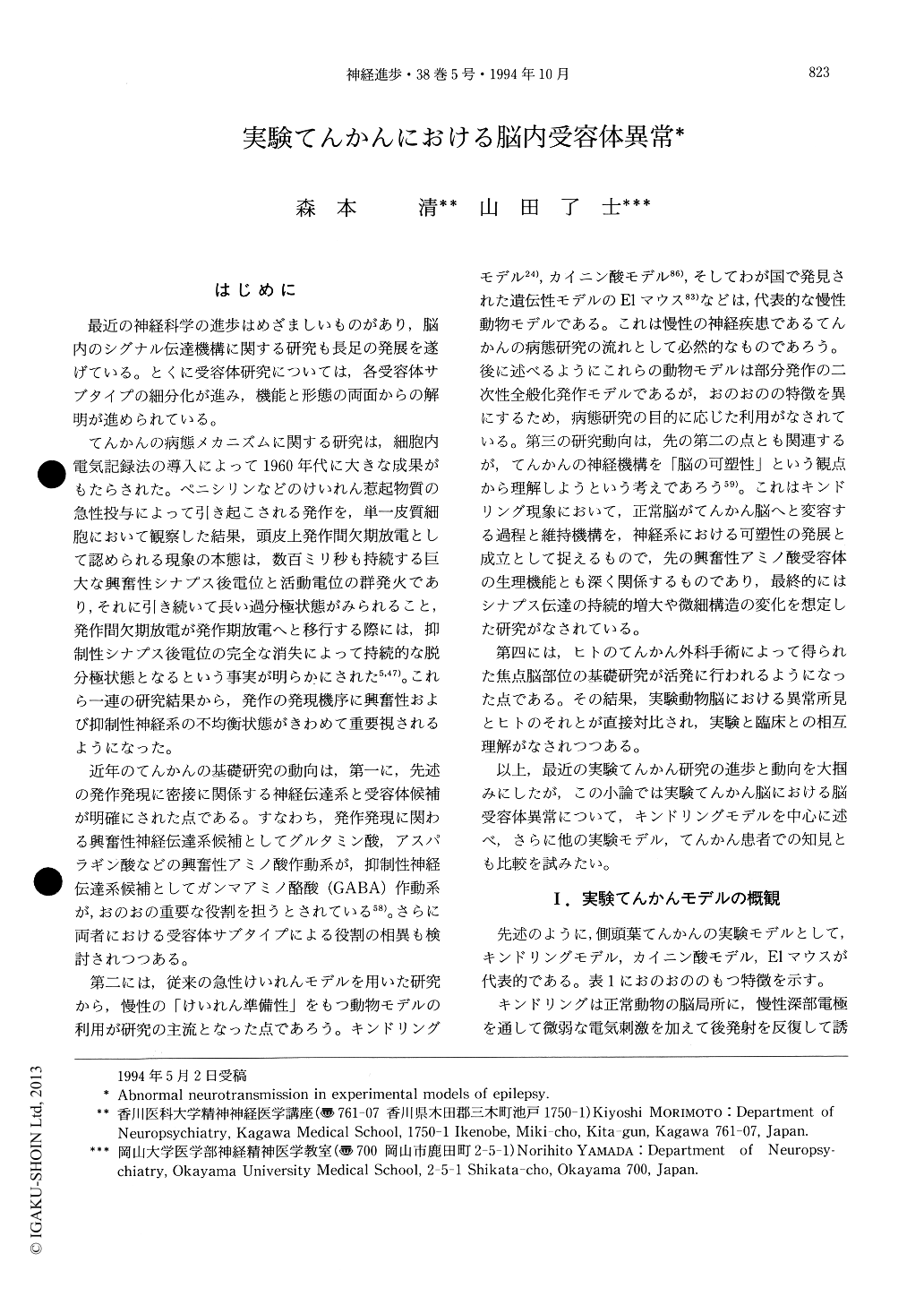Japanese
English
- 有料閲覧
- Abstract 文献概要
- 1ページ目 Look Inside
はじめに
最近の神経科学の進歩はめざましいものがあり,脳内のシグナル伝達機構に関する研究も長足の発展を遂げている。とくに受容体研究については,各受容体サブタイプの細分化が進み,機能と形態の両面からの解明が進められている。
てんかんの病態メカニズムに関する研究は,細胞内電気記録法の導入によって1960年代に大きな成果がもたらされた。ペニシリンなどのけいれん惹起物質の急性投与によって引き起こされる発作を,単一皮質細胞において観察した結果,頭皮上発作間欠期放電として認められる現象の本態は,数百ミリ秒も持続する巨大な興奮性シナプス後電位と活動電位の群発火であり,それに引き続いて長い過分極状態がみられること,発作間欠期放電が発作期放電へと移行する際には,抑制性シナプス後電位の完全な消失によって持続的な脱分極状態となるという事実が明らかにされた5,47)。これら一連の研究結果から,発作の発現機序に興奮性および抑制性神経系の不均衡状態がきわめて重要視されるようになった。
Among various experimental models of epilepsy, three major models, namely, kindling, kainic acid-induced seizures and El mice provide us with peculiar phenomenon that resembles to that is seen in human epileptic patients. Kindling in a model of secondary generalization of partial epilepsy and is based on functional changes in neural systems. Kainic acid-induced seizures, on the other hand, is more closely associated with neuropathological changes, e. g. hippocampal cell loss and the sprouting of mossy fibers in the hippocampus.

Copyright © 1994, Igaku-Shoin Ltd. All rights reserved.


